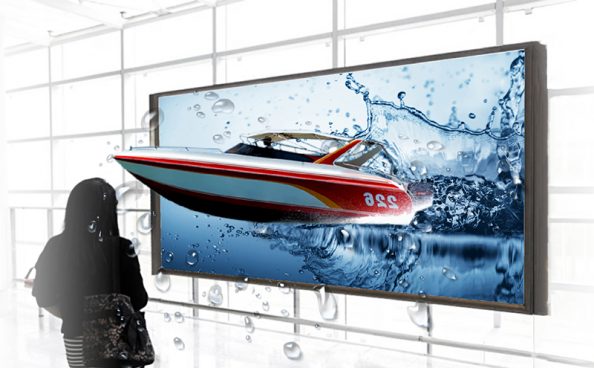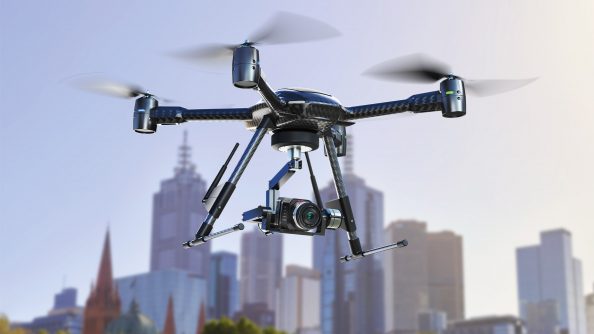One of the fascinations of watching old movies is in seeing how far technology has come on and off-screen. From the enormous cell phones of the 1980s to the shaky special effects of the early monster movies, it is possible to see the development of technology both in society and in the movie industry unfolding over the years.
That process isn’t slowing down. The movies we watch today are assisted by a variety of new technologies, as directors, producers and movie companies push the boundaries of what is possible. Here are just a few of the ways in which tech is changing the movie business.
3D goes glasses-free
 The latest wave of enthusiasm for 3D movies has faded and although 3D technology has a great deal of potential, movie fans appear to be voting with their feet, preferring to watch non-3D films rather than wear special glasses to watch sometimes gimmicky 3D effects.
The latest wave of enthusiasm for 3D movies has faded and although 3D technology has a great deal of potential, movie fans appear to be voting with their feet, preferring to watch non-3D films rather than wear special glasses to watch sometimes gimmicky 3D effects.
But all of that may be about to change. Researchers at MIT have been working on new 3D technology that won’t require 3D glasses, and which offers dramatically improved picture quality instead of tired-looking 3D pop-outs. Although this tech is largely confined to tradeshows, it could break through to the mainstream industry in the next couple of years, as it is reported that James Cameron is planning to use glasses-free 3D in Avatar 2.
The rise of VR and AR
Since the aim of moviemakers from the beginning has been to involve the audience in the movie experience, Virtual Reality (VR) and Augmented Reality (AR) have an obvious and game-changing potential when it comes to movie production.
In theory, VR could enable audiences to interact with the world in which the movie characters exist, albeit in a limited way initially, but the possibility of a movie becoming a phenomenon that audiences can participate is a revolutionary one. The development of VR in movie production is in its early stages, but AR may have more immediate impact. The success of Pokemon Go illustrates the potential of this technology and in the next few years, moviegoers are likely to see AR increasingly used to personalize and enhance their viewing.
3D printing
3D printing technology is in the process of going mainstream and it has huge potential for movie production. Although 3D printing is not used for large scale set components, the technology is increasingly being used to turn the vision of filmmakers into reality. 3D printing technology has already been employed to create a number of effects including:
- The night vision goggles used in Zero Dark Thirty
- A tank exterior in Fast & Furious 6;
- The canopy for a spaceship in Guardians of the Galaxy;
- Spaceship props used in both in Ex Machina and Avengers: Age of Ultron.
Drones
 Drones are not a new development in the film industry, but drone technology has raced ahead in recent years, opening up the possibility of drone use by independent filmmakers.
Drones are not a new development in the film industry, but drone technology has raced ahead in recent years, opening up the possibility of drone use by independent filmmakers.
Although the use of drones to shoot aerial scenes has been widespread for many years, problems related to film quality and battery length have meant that their use was expensive, and they were often unreliable. But the development of drone technology has made them a much more viable option than helicopters. Drones can achieve shots and angles that would be simply impossible using helicopter-based technology and are enabling moviemakers in all genres to realize their artistic conceptions on film.
Behind the scenes
Technology also has the potential to shape the process of film production in ways that you may not even notice. Take the issue of consent. Legally, filmmakers have to ensure that anyone who appears in the background of a shot but who is not an extra or part of the cast, gives their signed consent. Traditionally this is done the old-fashioned way, with pen and paper, but new technology offers the possibility to speed up the process.
Companies like DocuSign, chaired by tech guru Keith Krach, have developed paperless, e-signature solutions that are revolutionizing the way that contracts are signed, making it much quicker and far easier for movie producers to obtain consent.
Conclusion
Our ongoing fascination with technology and the ingenuity of scientist, engineers and moviemakers is helping to change the face of movie production, and in the years to come, moviegoers will be able to enjoy an even more immersive and interactive experience.


















